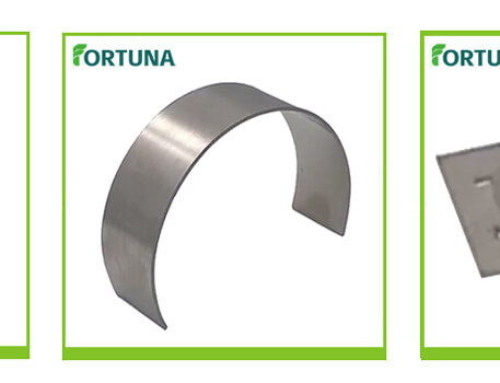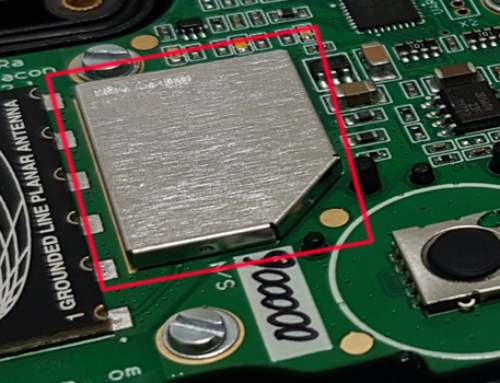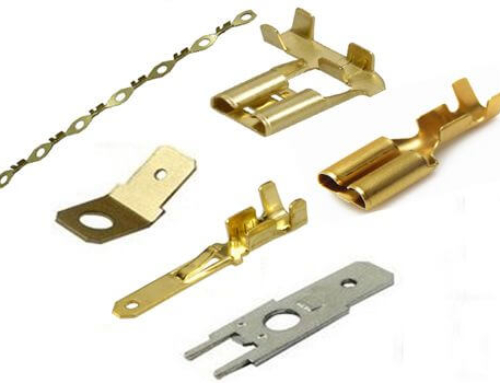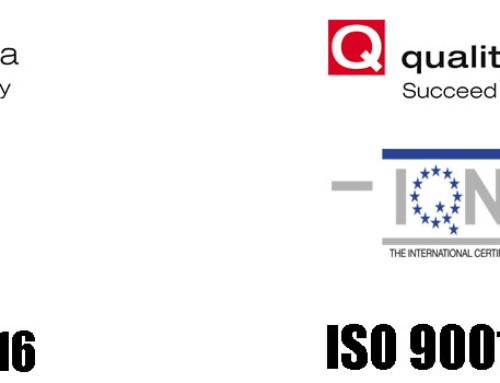The complete guide of perfect metal stamping design
Metal stamping is one of the most cost-effective,highly efficient, accurately repeatable and widely used manufacturing process in the world. It’s essential to start with the best product designs that ensure optimized part performance, quick turnaround, high quality and minimized costs. So what are the most critical factors to consider when designing your stamped parts?
FORTUNA has worked out a guide for our customers as a design reference.
This guide contains:
*metal stamping process
*different metal stamping dies
*Cost saving consideration
*And more
Metal forming is a complex process that can include a number of tactics-blanking, punching, bending and piercing and son on.
Those tactics allow manufactures to produce high-quality and cost-effective metal components. However, each project varies in materials, design and complexity.
Chapter 1: What is the process of metal stamping?
Metal stamping processes are included a wide variety of associated operations. Determine which process is applicable for a particular part is a critical step in the design process.The part design may require one or more process for a complete part.
- Blanking: Blankingis a metal fabricating process, during which a metal work piece is removed from the primary metal strip or sheet when it is punched. The material that is removed is the new metal work piece or blank. Sheet metal blanking on steel, stainless steel, aluminum, copper, brass and alloy is carried out with punching and matrixes.
- Piercing: Piercing is a shearing process where a punch and die are used to create a hole in sheet metal or a plate. The process and machinery are usually the same as that used in blanking, except that the piece being punched out is scrap in the piercing process. An alternative name of piercing is punching.
- Bending: Bending is a process in which the metal is deform in such a way that the length and thickness before bending and after bending remains same. It only changes shape of the work piece.Bending is a process that occurs when a metal is distorted bu deforming the material and changing its shape.
- Forming: Forming is a process that similar to bending and complex parts such as U sections and channel sections of various profiles can be economical produced with multiple bends without altering the material thickness.
- Drawing(Deep & Shallow): Drawing is the process of drawing the blank of sheet metal that is held at the edges, and the middle section of the part is forced by a punch into a die to stretch the metal into a shape defined by the die set.Deep draw refers to the process of pulling a flat “blank” of material over a radiused die edge and into a cavity, producing a closed bottom, round or irregularly shaped cup or cylinder. It should not be confused with stretch -forming. The blank is actually forced into a plastic state as it is dragged over the die radius and down into the die. This process is done under calculated and very controlled conditions involving blank-holding pressures, punch and die radii, punch speed and lubrication.Anatomy of a Deep DrawThe 2 stages of a draw are cupping and drawing. When the punch first contacts the blank, the nose of the punch initially embosses the material into the die. Some stretching occurs at this point and produces what is known as a “shock line”. This is a pronounced area of thinning around the radius at the bottom and just up into the straight wall of the shell. Depending on the shape of the bottom, the material may still be near original thickness across the bottom face (flat bottom) or thinned out by a stretching action (spherical bottom). As the blank is pulled into the die, the material at the circumference gathers and the wall progressively thickens. As the blank is pulled in to near shell diameter, the material thickens to as much as 10% over the original thickness. Clearance must be provided for this thickening to occur so that the material will not get bound up between punch and die. In addition, the punch must be tapered so that the finished shell can be stripped off. Therefore, a drawn shell will taper from bottom to top. It is possible to minimize this through subsequent sizing operations, but not eliminate it entirely.The blank used to produce a shell is cut from rolled strip material with a grain structure elongated across the blank in the direction of rolling. Since this cross-grain does not pull into a drawn shape evenly from all directions, great stresses are induced in the shell wall. Due to these uneven stresses, a drawn shell will not be perfectly round. A flange added to the top of the shell will minimize this, but the smaller the flange, the less strength it has to keep the shell round.
Specifying a Drawn Shell
Since the original blank is so altered by the deep draw process, the wall thickness cannot be specified in terms of mill tolerances. Depending on application, the three ways of specifying the thickness of material in a shell would be to call out the thickness of material to be used, the minimum wall thickness or the maximum wall thickness. Wall thickness can be specified in more detail, but only after development work has been done with the draw process. Since the material is formed around the punch, shells are typically dimensioned to the inside diameter, with taper allowed from bottom to top. Alternatively, the shell can be dimensioned to the outside diameter with the maximum size found at the top, and tapering down to the bottom.
If a straight shell with no flange is required, the shell will be “pinch-trimmed” – that is trimmed flush with the outside diameter. Since the shell has a radius at the top, the remaining trimmed edge will have a partial radius from the inside, abruptly ending in a somewhat sharp outer edge. Also, since the die must have enough clearance to accept the shell, there will be a slight flare at the top of the shell. The bottom of a shell can be pierced out in a similar manner to produce a tubular part, but the same pinch-trim principles apply to the inside diameter. If a straight, cut-off edge is desired, it would require a secondary machining or cut-off operation and should be specified on the part draw in.
These are the main processes involved in the design of manufacturing your metal parts in all industries fields: automotive, household appliances, electrical device and many more.
Types of Stamping Operations
Progressive die stamping
Progressive die stamping uses a sequence of stamping stations. A metal coil is fed into a reciprocating stamping press with progressive stamping dies. The die moves with the press, and when the press moves down the die closes to stamp the metal and form the part. When the press moves up, the metal moves horizontally along to the next station. These movements must be precisely aligned as the part is still connected to the metal strip. The final station separates the newly-fabricated part from the rest of the metal. Progressive die stamping is ideal for long runs, because the dies last a long time without becoming damaged, and the process is highly repeatable. Each step in the process performs a different cut, bend, or punching operation on the metal, thus gradually achieving the desired end-product shape and design. It is also a faster process with a limited amount of wasted scrap.
Transfer Die Stamping
Transfer die stamping is similar to progressive die stamping, but the part is separated from the metal trip early on in the process and is transferred from one stamping station to the next by another mechanical transport system, such as a conveyor belt. This process is usually used on larger parts that may need to be transferred to different presses.
Four-Slide Stamping
Four-slide stamping is also called multi-slide or four-way stamping. This technique is best-suited for crafting complex components that have numerous bends or twists. It uses four sliding tools, instead of one vertical slide, to shape the workpiece through multiple deformations. Two slides, or rams, strike the workpiece horizontally to shape it, and no dies are used. Multi-slide stamping can also have more than four moving slides.
Four-slide stamping is a very versatile type of stamping, as different tools can be attached to each slide. It also has a relatively low cost, and production is fast.
Fine Blanking
Fine blanking, also known as fine-edge blanking, is valuable for providing high accuracy and smooth edges. Usually done on a hydraulic or mechanical press, or by a combination of the two, fine blanking operations consist of three distinct movements:
- Clamping of the workpiece or work material in place
- Performance of the blanking operation
- Ejection of the finished part
Fine blanking presses operate at higher pressures than those used in conventional stamping operations, hence tools and machinery need to be designed with these higher operating pressures in mind.
The edges that are produced from fine blanking avoid fractures as produced with conventional tooling and surface flatness can exceed that available from other stamping methods. Since it is a cold extrusion technique, fine blanking is a single-step process, reducing the overall costs of fabrication.
Types of Stamping Dies
Dies that are used in metal stamping operations can be characterized as either single-station or multiple-station dies.
Single-station dies include both compound dies and combination dies. Compound dies perform more than one cutting operation in a single press, such as the case of the multiple cuts needed to create a simple washer from steel.
Combination dies are ones which incorporate both cutting and non-cutting operations into a single press stroke. An example might be a die that produces a cut as well as a flange for a given metal blank.
Multi-station dies include both progressive dies and transfer dies, where notching, punching, and cutting operations occur in sequence from the same die-set.
Steel rule dies, also referred to as knife dies, are were initially used with softer materials such leather, paper, or cardboard, but have also found application in cutting and shaping of metals including aluminum, copper, and brass. The steel strip material used for the cutting surface is designed to match the desired shape, and a slot is cut into the die shoe to hold the steel rule material. The characteristics of the material to be cut, such as its thickness and hardness, help establish the steel rule thickness to be used in the cutting blade.
Chapter 2: How to select the best material for your project?
A successful design hinges significantly on the right choice of metal.Select the right material, whether it will be stainless steel, aluminum or cold rolled steel, is to ensuring top-notch quality products.
Depending on specific project needs, there are many parameters we evaluate before proposing the right material, including:
- Material grade
- Material temper
- Material hardness
- Material thickness
- Material tensile strength
- Material weight
- Corrosion-resistance
- Required tolerance
Materials we’ve stamped:
The materials FORTUNA has stamped included:
- Aluminum
- Stainless Steel
- Carbon Steel
- Spring Steel
- Brass
- Copper
- Beryllium Copper
- Phosphor Bronze
- Nickel & Nickel Alloys
- Specialty Metals
- And many more….
You can also ask FORTUNA to propose and utilize the most economic, best performing materials for your projects.
Chapter 3: What’s the difference of different metal stamping dies?
When a concept is approved, designers are given a number of dies to create using 3D virtual graphics programs. There are many types of dies for different needs.

Progressive die stamping:The most economical & tight-tolerance metal stamping for high volume productions.
Single-Stage die: Single stage stamping is best suited for small production volumes or simpler parts. Deep drawn parts.
Compund die:Compund die stamping is best suited for simpler, flat metal parts such as washers, gaskets, shims and many more.
What Is a Stamping Die?
A stamping die is a special, one-of-a-kind precision tool that cuts and forms sheet metal into a desired shape or profile as the sheet metal is pressed, or stamped, between two mating components. A die gets the force it needs from a press. The part produced by stamping the sheet metal between the dies in the press is called the piece part.
How many types of dies perform?
Though die types are many, they can be broken into two basic types—cutting and forming. Many dies perform both cutting and forming.
Cutting Dies. Cutting is perhaps the most common operation a stamping die performs. Cutting operations are blanking, shearing, trimming, piercing, and notching .
The sheet metal, positioned between two dies, is severed as the die cutting edges move past each other. The dies have a small gap between them, called the cutting clearance. Clearances change, depending on the type of cutting operation, metal properties, and the desired edge condition. The cutting clearance often is expressed as a percentage of the metal thickness. In most cutting operations, the metal is stressed to the point of failure, producing a cut edge that has a shiny portion referred to as the cut band or shear, and a portion of the edge called the fracture zone or break line (see Figure 2).
Forming Dies. There are numerous types of forming dies. Some of the most common forming die types are bending, stretching, flanging, drawing, coining, extruding, and ironing.
- Bending. Bending can be defined as a forming operation in which the metal is deformed along a straight axis. Tabs and channels are formed using the bending process.
- Stretching. Stretch forming imparts impressions or cavities in a flat or convex sheet metal part whereby surface enlargement—unlike deep drawing—is achieved by reducing the metal’s thickness. A classic example of a stretched part is an automobile hood.
- Flanging. Flanging is the bending of metal along a curved axis. Two basic types of flanges are tension (stretch) flanges, and compression (shrink) flanges. Tension flanges are susceptible to splitting. Compression flanges are susceptible to wrinkling.
- Drawing. Of all the forming operations used to create parts, drawing may be the most impressive. Draw dies create the part shape by controlling metal flow into a cavity and over the forming punch.
Draw dies use a pressure-loaded plate or ring, called a draw pad or blank holder, to control the metal flow into the cavity. The draw is designed to prevent the metal from wrinkling as it flows into the cavity. Increasing or decreasing the pressure exerted under the pad controls how much metal feeds into the die.
Oil pans, automobile doors and fenders, cookware, and doorknobs are just a few of the parts manufactured using drawing.
- Coining. This forming die type creates the part shape by squeezing the metal under extreme pressure. The die penetrates the piece part. Often coining is used to reduce the metal thickness as well as to shape the part. Coins (metal currency) are created using the coining process.
- Extruding. This is a process in which the metal is bent, or flanged, into a continuous radial profile around the perimeter of a prepierced hole. An extrusion also is referred to as a hole expansion or a continuous radial stretch flange. Like the stretch flange, the metal is susceptible to splitting.
- Ironing. Ironing dies are similar to coining dies in that they use compression to deform the metal. However, unlike conventional coining, ironing squeezes metal along a vertical wall.
This highly compressive process unifies a wall’s thickness as well as increases the length of a drawn vessel. Items such as beverage and soup cans are made using an ironing process.
How Large Are Dies?
Dies can range in size from those that can fit in the palm of your hand for making microelectronics to those 20 square feet wide and 10 ft. thick for making entire autobody sides. Certain dies can make more than one piece part per cycle.
In addition, die size varies depending on the production method in which it is used.
Single-station Dies. These dies typically are used for a low-production, hand-fed single cutting or forming operation.
Progressive Dies. Progressive stamping is one of the most common, fastest means of producing piece parts. Unlike in a single-station operation, all of the stations in a progressive-stamping line needed to cut and form the piece part are mounted on a single common die set. These stations are properly timed and sequenced so that the piece part can be fed ahead of a given constant distance. This distance is called the progression, or pitch. As the strip or coil advances through the die in the press, each station cuts and forms the part in a given sequence.
Each stage of the part remains in the original strip or coil and is “tied together” using a portion of the strip or coil called a strip carrier. Many different stages of a part—even left-handed and right-handed halves of a part—are stamped with a single stroke of the press.
Transfer Dies. Transfer dies are line dies that are timed together and spaced an even distance apart in one press. The distance between each die or station that the part must travel is referred to as the pitch. Unlike in single-station dies or progressive dies, the piece part is transferred via traveling rails mounted within the boundaries of the press.
Chaper 4: How should I save the cost for metal stamping project?
There are three main factors to optimize the cost of your metal stamping project.
Materials/production volume/secondary processes
- Material selection is usually the first and most effective step to lowering costs. Maybe you can consider an alternative metal with similar properties for your application.For example, copper with different conductivity, the purity of copper decrease and so does the conductivity and price. You can decide which is best suitable for your application among copper/brass/beryllium copper/phosphor bronze etc.. This will help in determining the necessary material performance while ensuring you get the best value. And don’t forget to consider specific manufacturing needs — some metals are more difficult to deep draw than others, which can drive up processing costs.
- Production volume. Simply, the more parts you can manufactured at once, the less it will cost you overall.Setup times – switching out tooling and dies, re-calibrating machinery, getting the materials in place for each client – are a major factor in all manufacturing costs. If you place a large order that your manufacturer can set up once and let run for a good part of the day, you will greatly decrease your overall costs.
- Secondary processes. Usinga manufacturer who does more than just stamping will save money in transport and shipping costs, plus you’ll only need to communicate with one vendor. Some manufacturers offer the full package: additional fabrication, treating, coating, finishing, packaging, and shipping.
Chapter 5: How do I find a company with faster lead times?
A: Lead time for the production of a custom component is usually related to a company’s manufacturing capabilities and work load. The advent of newer metal stamping equipment and technologies have allowed manufacturers to produce high-quality parts at a faster rate. For example, multi-out tooling allows multiple components to be stamped simultaneously.
We hope that some of your most important questions were addressed in this article. Should you have any further questions, our engineering team is more than happy to answer them for you. Feel free to contact us with your questions, and we will be sure to get back to you as soon as possible.




I’m excited to discover this site. I need to to thank you for your time due to this
fantastic read!! I definitely appreciated every bit of it and
i also have you book marked to check out new information in your blog.
Hello everyone, it’s my first pay a quick
visit at this web page, and post is actually fruitful in favor of me, keep up posting these types of articles.
I liked that you explained that it would be smart to consider the materials and using and if they will be easy to stamp or not. Also, I would want to consider coiling the metal as well. Personally, I would want to get an expert to help with doing the stamping especially if it was on something important.
I love the way you projected about Metal stamping and its usage.Choosing the Best Raw Materials for Metal Stamping Assembly is a very Big task and also What raw material you choose in your metal stamping . assembly impacts the final outcome of the finished product. Sustainability, malleability, flexibility, and overall benefits that will result in the long term.
To know more benefits and usages visit: https://www.eigenengineering.com/raw-materials-for-metal-stamping-assembly/
I want to to thank you for this excellent read!!
I absolutely enjoyed every bit of it. I have got you book marked to look
at new stuff you post…